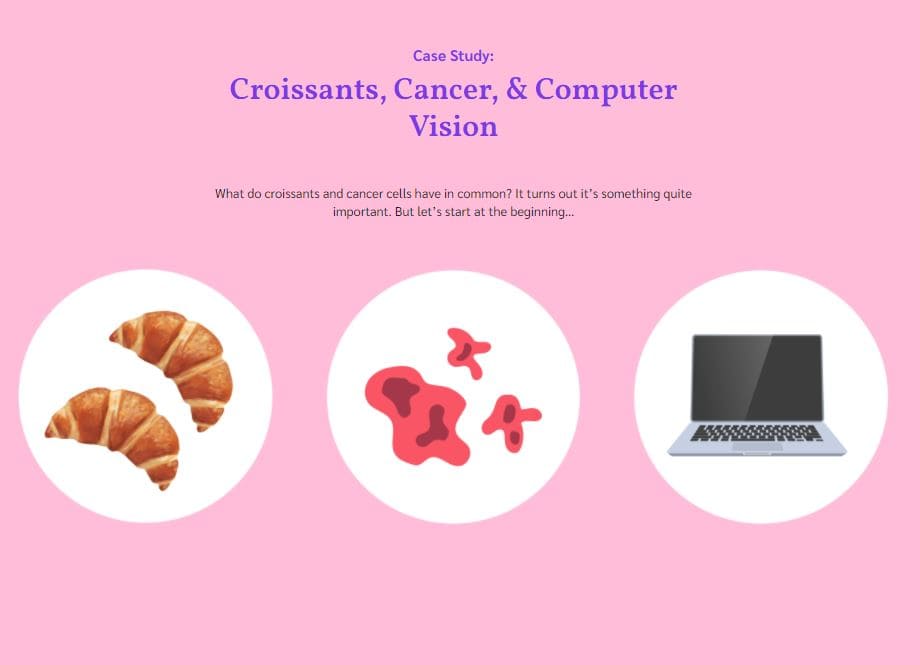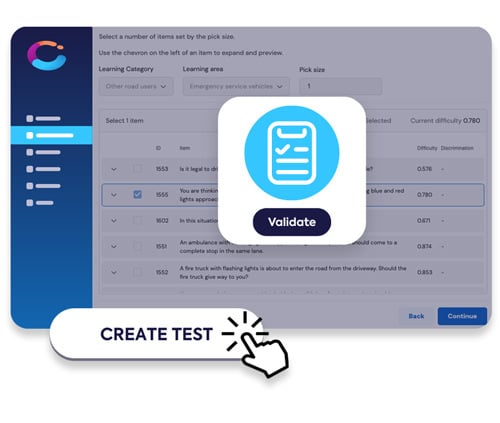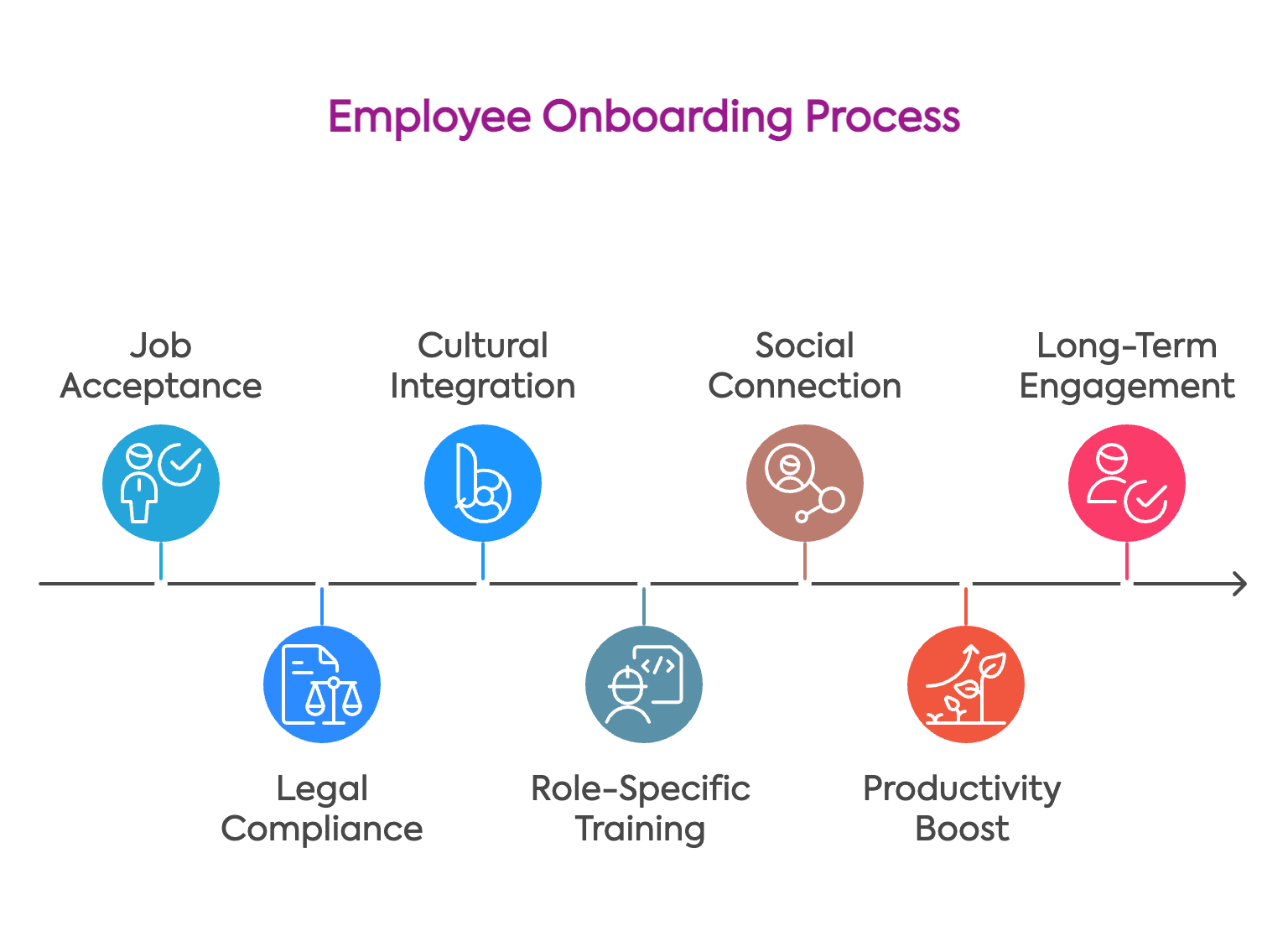From Certified Skills to Assure: A purpose-driven evolution
Sometimes, a name isn’t just a name—it’s a statement of purpose. That’s what guided the transition from Certified Skills to Compono Assure, a move...
Become the expert on delivering
valid and fair assessments for
your training and education.
Hire
|
Engage
|
Develop
|
|
Automatically match to candidates who are a great fit for your team culture and who are intrinsically motivated to succeed. |
Deeply understand your organisation with science-backed analytics on your culture, team design, and engagement. |
Back your onboarding, compliance and skill development with industry-leading credentialling, competency and capability expertise.
|
.png?width=383&height=200&name=team%20(1).png)

Instructional design is the complex interplay between the instructor, the learner, and the medium that supports learning of new knowledge or skills. It’s a craft underpinned by principles of learning science. In this post, instructional designer Henno Kotze, looks at several learning science principles that underpin the learning and development at Compono.
I’ve always been passionate about geography and a few years ago I decided I’d like to memorise the capital cities of all the almost-200 countries in the world. I spent a long time staring at maps and lists but for the life of me I kept forgetting most of the new, long or exotic city names like Ouagadougou (Burkina Faso) or Antananarivo (Madagascar).
That was until I found a vocabulary learning app and, in just a few weeks, I had all the capitals down-pack and burned to memory, from Addis Ababa to Zagreb (a very nerdy party trick, I’ll admit). But what was it that made this app such an effective learning tool? It was what was under the hood - a unique blend of learning science, motivational theory, and gamification. It combined flashcards with user-generated memes, spaced out practice, all sprinkled with gamified elements – a fun dashboard and progress bar (every question you answered correctly would help a ‘memory flower’ grow a little higher). Here’s an example of how it worked: to remember that Tegucigalpa is the capital of Honduras, the app suggested I use the phrase I can’t ENDURE (Honduras) two gooses gulping (Tegucigalpa). Pair that with an image of two annoying geese making loud gulping sounds and it was guaranteed to be memorable and stick!

You might be thinking: “Okay great, but what does this have to do with eLearning and instructional design?” Well, that’s exactly the problem that, I dare say, all instructional designers (at least those at Compono) are obsessed with: how do we make learning stick? In other words, how can we help learners transfer the information they’re exposed to from their short-term working memories (surface learning) to their long-term memories, where they can make sense of the information (deep learning) and are able to recall the knowledge and (or demonstrate a skill) at will?
To help us answer this question we can turn to academic research on the matter. There are different ways to frame and apply learning science in eLearning, but here we’ll look at it from the perspective of six proven learning strategies, motivational theory, and how these are applied to create engaging and effective learning experiences for our clients.
Retrieval practice refers to recalling, or bringing information to mind, from memory rather than trying to cram it into the learner’s heads. It could be as simple as a quiz, using flashcards, or asking learners to summarise a concept or section of a course.
This strategy is put to good use in the Compono Skills Library, our premium 'off-the-shelf training' developer specialising in corporate learning that enriches and upskills employees at any stage within their hire to retire journey. In all our Skills Library courses learners are asked to retrieve information from memory, helping them to consolidate and transfer that knowledge to their long-term memories through various interactions and quizzes. For example, in the Introduction to Cyber Security course, learners have to spot suspicious elements of a phishing email, based on what they’d learned about email scams.

This is distributing learning opportunities out over time. For example, research shows that studying for 20 minutes a day for a week improves learning much more than cramming for two and a half hours on one day. Part of this has to do the limitations of our working memory. We know the brain can only hold a certain amount of information (our cognitive load) and information overload can damage learning.
The Skills Library suite of courses has been designed with this strategy in mind. We’ve done away with the hours-long model of ‘click next’ eLearning and focussed on providing succinct, to-the-point learning experiences with a maximum seat time of 30 minutes. We’re also planning to launch a suite of microlearning courses soon, so watch this space!
This strategy involves learners mixing, or interleaving multiple subjects or topics while they study. This has been shown to be one of the most effective ways of improving learning. So, when you’re learning about two or more related topics at a time, rather than looking at each individually in big blocks, try alternating between them. Coming back to my capital city example – instead of learning European capitals one day and Asian ones the next day, I’d be better off switching between or mixing the cities from both continents and studying them like that. While this might lead to making more mistakes during practice, I’ll retain the knowledge in the long-term for longer.
In a recent risk management process solution that we created for G8 childcare, we employed an unlocked menu system based around the module’s four main topics. This allows the learner to jump back and forth between the four areas, encouraging them to interleave their studying of the risk management topics.
When you add extra information to further explaining concepts or information, it’s using the strategy of elaboration. In essence, it’s any enhancement of the information to clarify the relationship between already-known information and information to-be-learned, e.g. connecting the learner’s prior knowledge with the new information presented. This elaboration could be visual, by adding images or infographics, or verbal, like using analogies or examples.
Our virtual reality (VR) solutions are typically targeted at a specific procedure or set of practical skills, which the learner can practice in the virtual environment. Since learners bring a lot of prior knowledge to these sessions, we design face-to-face activities that they can do before entering the VR environment to bring out that prior knowledge and prepare them for the activity they're about to perform.
This connects to the previous strategy of elaboration by adding visuals to text, or transforming the text to a visual format, for instance by mind-mapping. This presentation in two mediums, graphical and verbal, is dual coding and makes it easier for the information to be understood. Dual coding can be a very helpful learning strategy because we all learn best when we are given multiple representations of the same information, even better if they occur at spaced out time periods. Dual coding shouldn’t be confused with learning styles or preferences - catering to preferences is not an effective teaching or learning strategy.
We used dual coding effectively in a recent mental health project with Beyond Blue. The eLearning content included a number of theoretical diagrams which were complex in nature. It was therefore critical to include both visual representation as well as words to explain these concepts and provide different modes of presenting the information.
This is about taking an abstract concept and creating an example based off real-life experiences to solidify the meaning of the concept. There are lots of ways of doing this, such as including use cases, worked examples, case studies, or user stories in your content. All of these show learners how concepts are applied in the real world. Even better, you could ask learners to come up with their own examples, thereby invoking the strategies of retrieval practice and elaboration!
The Skills Library has a suite of courses aimed at addressing the skills gaps and ‘future skills’ as identified by the World Economic Forum. As these are very technical skills, we’ve included a range of concrete, real-world examples to demonstrate how these can be applied across a range of business and industries to support the learner in their understanding. For instance, the Introduction to Machine Learning course includes a case study of how machine learning and computer vision technology are used to identify different types of cancers to great effect in the medical field. The Introduction to the Internet of Things (IoT) course showcases how Rolls-Royce harness the power of IoT technology in the aviation industry successfully.


While some of these strategies overlap and others are quite different, what ties them all together is the concept of ‘desirable difficulty’. A desirable difficult is a learning activity that requires the correct amount of challenge or effort to improve long-term performance and knowledge retention. This is where the craft of instructional design really comes to the fore because if a learning experience is too difficult, it becomes demotivating, or too easy and the learners won’t learn anything new! For this reason, understanding the learner (as people and users), their context, motivations, needs, as well as the conditions in which learning happens is crucial in instructional design. For example, if a learner is forced to do compliance training and not really interested in the subject, we need to take this into account in the design by getting them interested in it or taking account of it in different ways.
This begs the question of how we get learners motivated to learn and persist in their learning? For this, we can turn to the seminal work on motivation, Deci and Ryan’s Self-determination Theory. It states that if we can design learning that supports an individual’s experience of autonomy, competence, and relatedness, these will foster high levels of motivation and engagement in the learning as well as improved persistence and performance. Let’s briefly look at how these three conditions can be taken account of in instructional design:
Autonomy: We can design opportunities that give learners choice, a sense of control, or ways they can self-direct their learning. This could be an open, or ‘unlocked’, navigation menu, branching scenarios, or even the ability to exit a course and return to it later without losing their progress.
Competence: Instead of assuming learners are empty vessels to be filled with knowledge (Paulo Freire’s ‘banking concept’ in pedagogy), acknowledge their prior knowledge; tap into what learners already know and leverage this in the course design. Build in opportunities for them to demonstrate and activate this existing knowledge through a pre-quiz or brainstorming activity. Positive, carefully-crafted feedback on their performance and progress, as well as constructive, timely, and objective feedback will add to the learner’s feeling of competence and self-efficacy.
Relatedness: Relating the course information and activities to the learner and their context is crucial in developing intrinsic information. If you consider the learner always having the question “What’s in it for me?” in the back of their head will go a long way to achieving this. Show them how completing the course or training will directly benefit them and relate it to them. Industry case studies, user stories, and other real-world examples help with supporting this condition. This also refers to building relationships with the learner. This can be achieved through discussion and collaboration opportunities, in-depth learner profiling, needs analysis and other means. The more the learner feels that the learning is personalised and tailored to them specifically, the more this condition will be met.
Obviously there are a myriad other factors at play when it comes to designing effective learning (meeting business objectives, well-designed UI/UX, etc), but those are topics for another post. Abigail Adams famously said that “learning is not attained by chance, it must be sought for with ardor and attended with diligence.” I would argue the same can be said for designing learning experiences: High-quality learning experiences are not designed by chance but are the result of a carefully-crafted combination of learning science, design theory, and a whole lot of passion and hard work! A lot goes into designing learning so that it doesn’t feel like learning - a fact worth remembering next time you’re doing an engaging online course, or next time you see a goose or two… 
Ready to make learning stick without reinventing the wheel? With Compono's purpose-built tools—like Develop and Assure—you get everything you need to manage, deliver, and measure learning that actually makes a difference. Whether it’s aligning your programs with a robust competency framework or streamlining the way content reaches your teams, Compono takes the heavy lifting out of the backend, so you can focus on real impact up front.
See how Compono can help you deliver, track, and improve learning with confidence.
Check out these great resources.
Learning Science for Instructional Designers: From Cognition to Application (Clark Quinn)
Neuroteach: Brain Science and the Future of Education (Glenn Whitman and Ian Kelleher )
Make it Stick: The Science of Successful Learning (Peter C. Brown, Henry L. Roediger, III, and Mark A. McDaniel)
How We Learn: The Surprising Truth About When, Where, and Why It Happens (Benedict Carey)
What is learning science?
Learning science is the study of how people learn, combining research from cognitive psychology, neuroscience, education, and instructional design. It focuses on understanding how to optimise knowledge retention, engagement, and skill acquisition effectively.
Learning science principles guide instructional designers in creating content that’s not only educational, but also engaging and memorable. By applying strategies such as retrieval practice, spaced practice, and elaboration, content can help learners transfer knowledge to long-term memory, enabling better learning outcomes.
Retrieval practice involves actively recalling information from memory rather than passively reviewing it. This strengthens neural pathways and improves the likelihood of retaining knowledge long-term. Techniques like quizzes, flashcards, or summarising content are great examples.
Spaced practice means spreading learning sessions over time rather than cramming everything into one sitting. Research shows that spacing out study sessions reduces cognitive overload, making it easier for learners to retain information.
Compono's Assure tool ensures employees are not just trained but also truly competent. It allows organisations to assess and track skills effectively, aligning employee abilities with business needs. This way, organisations can confidently manage and maintain workforce competency at every level.
Develop provides the tools needed to streamline the delivery of learning content. It helps organisations organise, share, and manage learning resources, while ensuring alignment with broader workforce development strategies. With Develop, learning delivery becomes seamless and strategic.
Yes, dual coding—which involves presenting information using both text and visuals—enhances comprehension and retention. Learners benefit from seeing concepts explained in multiple formats, creating stronger connections in memory.
Compono focuses on empowering HR and L&D teams by combining psychological insights with intuitive technology. Tools like Develop and Assure are tailored to provide data-driven solutions that support competency frameworks and strategic workforce planning, offering unmatched depth and usability.
Applying learning science principles can improve employee engagement, knowledge retention, and performance. By aligning training approaches with proven methods (e.g. interleaving topics or using concrete examples), organisations can create more effective training programs that drive real results.
If you're ready to empower learning in your organisation, check out Compono’s tools today!

Sometimes, a name isn’t just a name—it’s a statement of purpose. That’s what guided the transition from Certified Skills to Compono Assure, a move...

In today’s fast-paced, digitally-driven business world, companies are increasingly adopting Learning Management Systems (LMS) to streamline employee...

Here’s a sobering thought: 20% of new employees leave within their first 45 days. Many employees make this decision because they feel...